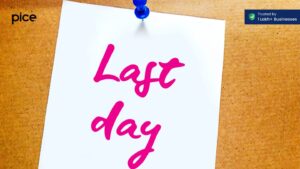GST on Mobile Phones
- 22 Aug 24
- 12 mins

GST on Mobile Phones
Key Takeaway
- GST has replaced multiple state and central taxes in India with a unified tax structure, simplifying tax calculation and compliance.
- Mobile phone prices have become more transparent and consistent across states due to the uniform 18% GST rate, benefiting both consumers and businesses.
- The input tax credit mechanism under GST allows manufacturers to offset taxes paid on inputs, reducing overall production costs and promoting competitive pricing.
- GST has standardized tax rates for mobile accessories based on HSN codes, ensuring consistent pricing and simplifying tax compliance.
- The introduction of GST has leveled the playing field between online and offline retailers by eliminating tax discrepancies, enhancing market competition.
Understanding GST
The Goods and Services Tax (GST) is a comprehensive indirect tax levied on the manufacture, sale, and consumption of goods and services in India. Introduced in July 2017, GST replaced multiple state and central taxes, unifying the tax structure across the country. This new system encompasses various taxes like VAT, service tax, and excise duty into a single tax, divided into SGST (State GST) and CGST (Central GST) for intra-state transactions and IGST (Integrated GST) for inter-state transactions. The primary goal of GST is to streamline the tax calculation process, reduce the tax burden on consumers, and enhance compliance and revenue collection for the government.
GST's implementation has had a significant impact on various sectors, including the mobile phone industry. Mobile devices, which were previously subjected to different tax rates in different states, now fall under a uniform taxation system. This change aims to bring about transparency and predictability in pricing, benefiting both consumers and businesses. By enabling the input tax credit mechanism, GST allows manufacturers to claim credits for taxes paid on inputs, thereby reducing the overall tax burden and production costs.
The introduction of GST marks a shift from the complex Pre-GST era, where the taxation rate varied widely across states, causing price discrepancies and compliance challenges. With GST, the mobile phone industry has experienced a more straightforward and efficient tax system, promoting economic growth and easier compliance for businesses.
GST Rates for Phone
The GST rate for mobile devices, including smartphones and feature phones, is set at 18%. This rate applies uniformly across all states, ensuring consistent pricing for consumers and simplifying tax compliance for businesses. Before GST, mobile phones were subject to a combined tax rate that included VAT, excise duty, and service tax, which often varied between 13.5% to 27% depending on the state. The introduction of a uniform 18% GST rate has standardized the applicable tax rate, reducing discrepancies and making the tax burden more predictable.
The GST Council, responsible for setting the tax rates, has aimed to balance the needs of revenue collection with the goal of promoting affordability and growth in the mobile phone industry. The 18% rate on mobiles is seen as a middle ground that helps maintain revenue without significantly increasing the purchase price for consumers.
💡If you want to pay your GST with Credit Card, then download Pice Business Payment App. Pice is the one stop app for all paying all your business expenses.
For businesses, the ability to claim input tax credit under GST is a crucial benefit. It allows manufacturers and retailers to offset the GST paid on inputs and services against the GST collected on sales, effectively reducing the overall tax burden. This mechanism helps in lowering production costs and can contribute to competitive pricing in the market.
In summary, the GST rate for mobile devices has brought about a uniform tax structure, reducing complexities and benefiting both consumers and the mobile phone industry. The standardization of the tax rate, coupled with the advantages of the input tax credit system, has streamlined tax compliance and contributed to more predictable pricing.
Impact of GST on Mobile Device Prices
The introduction of GST has had a notable impact on the prices of mobile devices. Before GST, the tax structure was fragmented, with varying rates of VAT, excise duty, and service tax across different states. This led to significant price variations and often higher costs for consumers in certain regions. With the implementation of a uniform 18% GST rate, the pricing of mobile phones has become more transparent and consistent across the country.
One of the key impacts of GST is the reduction in the overall tax burden on mobile phone purchases. By replacing multiple taxes with a single tax, GST has simplified the tax calculation process and reduced the cumulative tax effect. This has resulted in a more predictable and often lower purchase price for consumers. Additionally, the input tax credit mechanism allows manufacturers to claim credits for taxes paid on inputs, further reducing production costs and potentially lowering retail prices.
However, the impact of GST is not uniformly positive. The increase in import duty on mobile phones and components, aimed at promoting local manufacturing under the Make in India initiative, has led to higher costs for imported devices. This has somewhat offset the benefits of GST, leading to a mixed impact on prices. While domestically manufactured phones have become more competitively priced, imported phones have seen price increases due to higher import duties.
Overall, the impact of GST on mobile device prices has been significant, leading to more uniform pricing and a reduction in the overall tax burden. The balance between promoting local manufacturing and managing import costs continues to shape the pricing landscape in the mobile phone industry.
HSN Codes and GST Rates for Mobile Device Accessories

The Harmonized System of Nomenclature (HSN) is a standardized system used to classify goods for taxation purposes. Under GST, mobile device accessories are assigned specific HSN codes, which determine the applicable tax rates. This classification helps in streamlining tax compliance and ensuring that the correct tax rate is applied to various products.
Mobile phone accessories, such as chargers, earphones, and cases, are generally taxed at an 18% GST rate. However, certain accessories, like Lithium-Ion Batteries, may attract different rates based on their classification under HSN codes. For instance, Lithium-Ion Batteries used in mobile phones are classified under HSN code 8507 and are subject to an 18% GST rate.
The uniform application of GST rates based on HSN codes ensures consistency and predictability in the pricing of mobile accessories. This helps consumers understand the tax component of their purchases and aids businesses in accurate tax calculation and compliance. The move from the Pre-GST era's varied taxation rates to a standardized system has simplified the tax landscape for both consumers and businesses.
GST Rates for Various Accessories
Different mobile phone accessories fall under specific HSN codes, each with its applicable GST rate. For example, mobile phone cases are classified under HSN code 3926 and attract an 18% GST rate. Similarly, mobile chargers, classified under HSN code 8504, also attract an 18% GST rate. These uniform rates simplify the tax structure and ensure transparency in pricing.
| Accessory | HSN Code | GST Rate |
|---|---|---|
| Mobile Phone Cases | 3926 | 18% |
| Mobile Chargers | 8504 | 18% |
The standardization brought by GST has reduced the confusion that existed in the Pre-GST era, where different states levied different taxes on accessories. Now, consumers can expect a consistent tax rate regardless of their location, which aids in making informed purchase decisions. For businesses, the clear classification and applicable rates under HSN codes streamline tax compliance and reduce the administrative burden.
In conclusion, the HSN codes and corresponding GST rates for mobile device accessories have brought about significant improvements in tax compliance and pricing transparency. The standardized tax rates under GST ensure a uniform approach to taxation, benefiting both consumers and businesses in the mobile phone industry.
Effects of GST on Mobile Devices and Accessories
The effects of GST on mobile devices and accessories have been profound, bringing about several key changes in the market. One of the most notable effects is the standardization of tax rates, which has led to more predictable pricing for consumers and easier compliance for businesses. The uniform 18% GST rate on mobile phones and accessories ensures that the tax burden is consistent across the country, eliminating the disparities that existed in the Pre-GST era.
For manufacturers, the input tax credit mechanism under GST has been a significant advantage. By allowing businesses to claim credits for taxes paid on inputs, GST reduces the overall production costs. This benefit can translate into more competitive pricing for mobile devices and accessories, enhancing the market's attractiveness to consumers.
However, the increase in import duties on mobile phones and components, introduced alongside GST, has had a mixed impact. While the GST regime promotes local manufacturing through reduced production costs, the higher import duties have increased the costs of imported devices and components. This dual impact has led to a varied pricing landscape, with domestically produced phones becoming more competitive and imported phones facing higher costs.
The effects of GST on mobile devices and accessories also extend to the broader economic landscape. The simplified tax structure has improved compliance and revenue collection, contributing to economic growth. For consumers, the transparency and predictability in pricing have made it easier to understand the cost implications of their purchases, fostering a more informed and confident market.
How GST Benefits Smartphone Dealers

GST has brought several benefits to smartphone dealers, primarily through the standardization of tax rates and the introduction of the input tax credit mechanism. The uniform 18% GST rate on mobile phones and accessories simplifies the tax compliance process, making it easier for dealers to manage their tax liabilities and pricing strategies.
Offers with Tax Adjustments: With GST, smartphone dealers can offer promotions and discounts with greater transparency and accuracy. The ability to adjust prices based on a uniform tax rate ensures that the tax implications of any offers are clear and manageable. This helps in creating attractive deals for consumers while maintaining compliance with tax regulations.
End of Online Discounts: The introduction of GST has also impacted the online retail landscape. Before GST, online retailers often offered significant discounts by leveraging tax differences between states. With the uniform GST rate, this practice has largely ended, leading to a more level playing field between online and offline retailers. This has benefited traditional smartphone dealers, who can now compete more effectively with online platforms.
Introduction of the New Indirect Tax System: The new indirect tax system under GST has streamlined the overall tax compliance process for smartphone dealers. The consolidation of various taxes into a single GST framework reduces administrative burdens and simplifies the process of tax calculation and filing. This efficiency allows dealers to focus more on their core business activities and customer service.
Influence on Smartphone Prices: The influence of GST on smartphone prices has been multifaceted. While the uniform tax rate has brought about consistency in pricing, the increase in import duties on certain components has led to higher costs for some devices. However, the overall effect of GST, combined with the benefits of input tax credit, has been positive for the market, encouraging competitive pricing and enhancing consumer confidence.
 By
By 

















